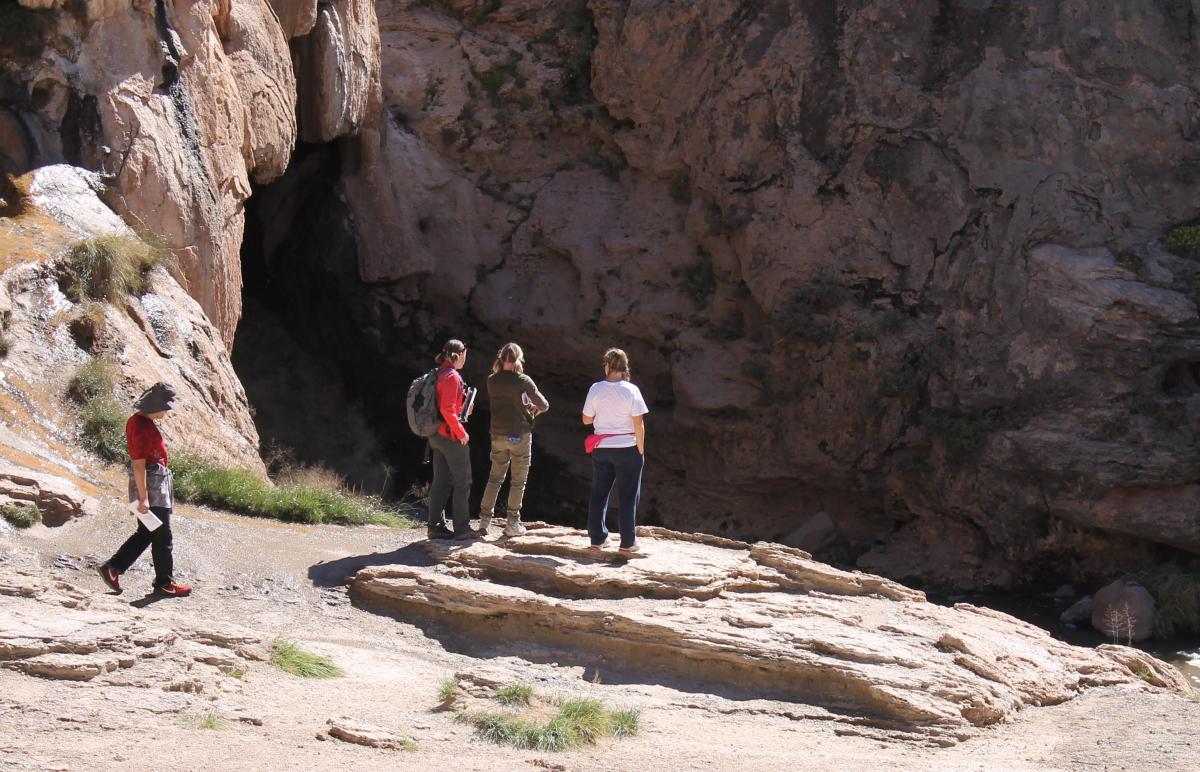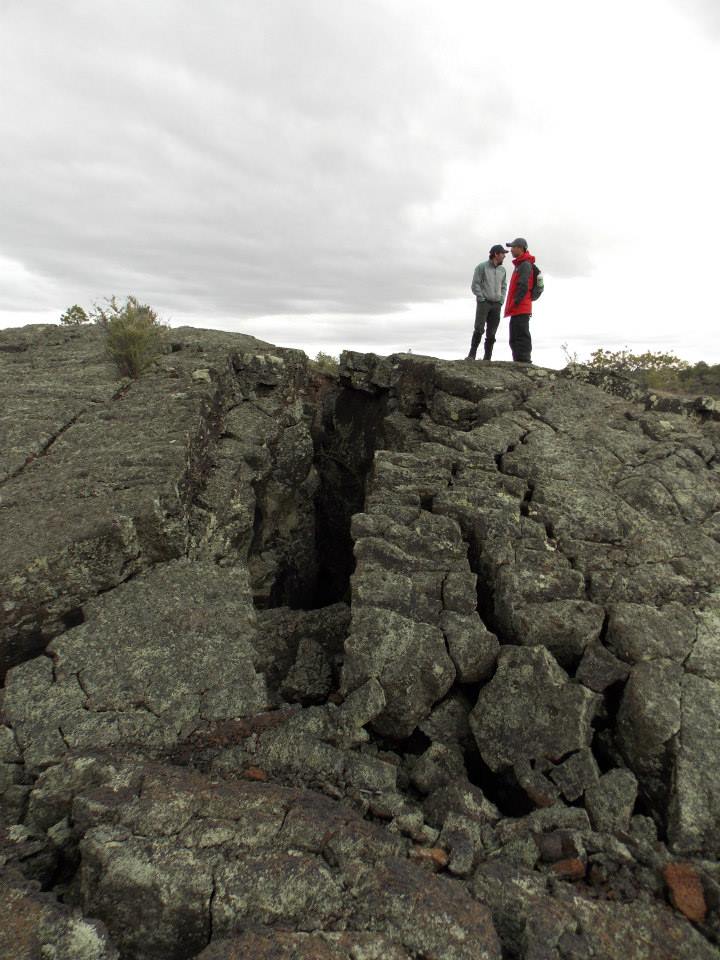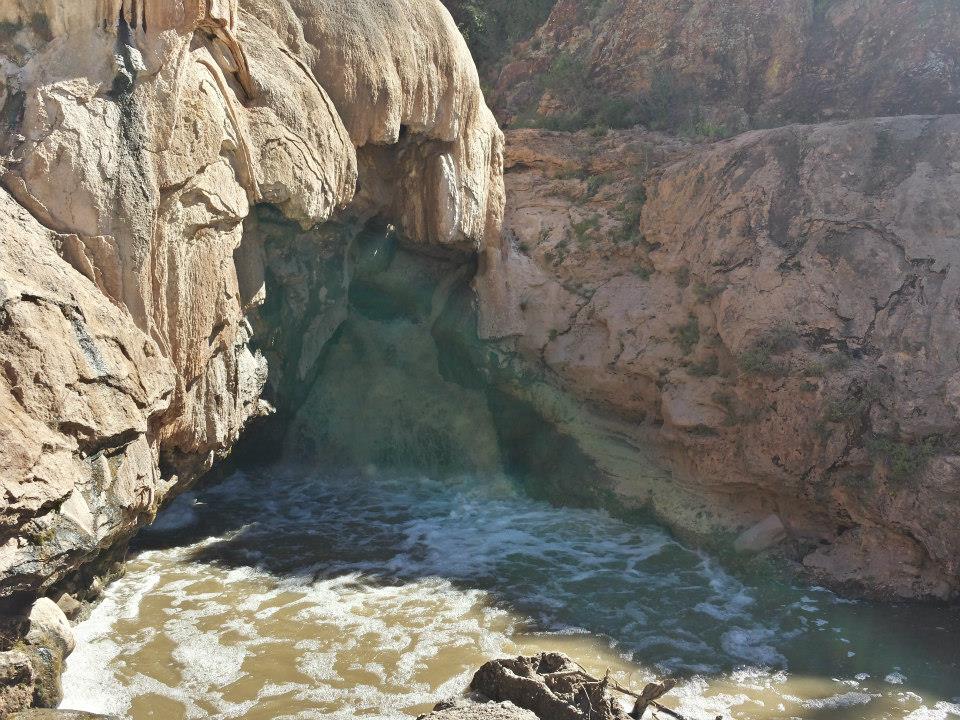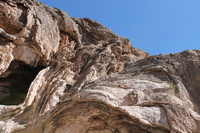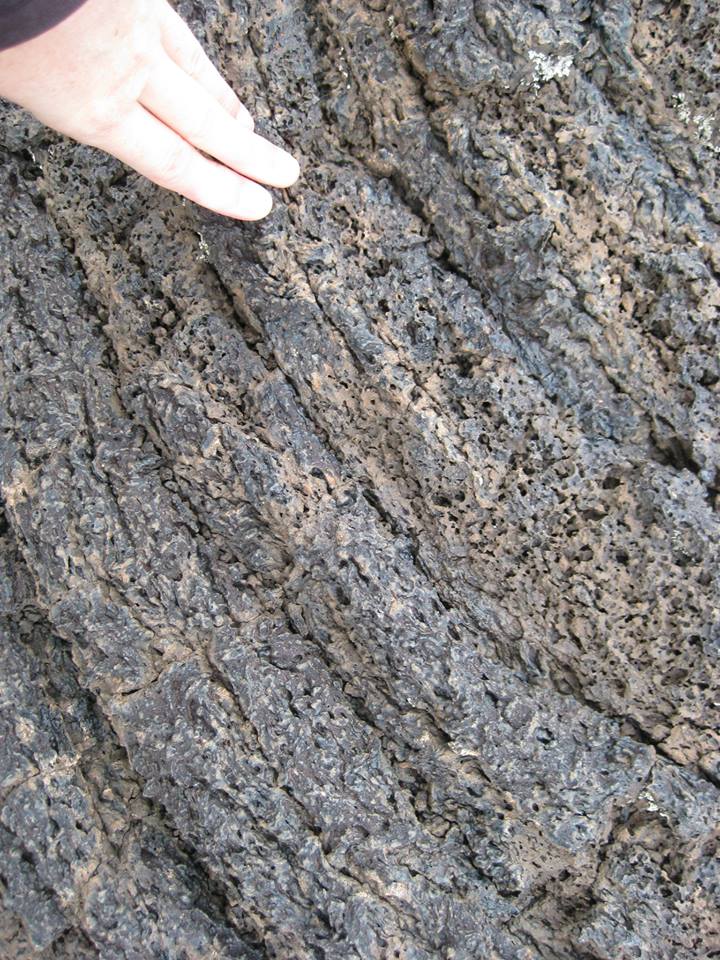Fall 2013 Field Trip (PTYS 594A)
Northern New Mexico and the KT Boundary Layer
by Shane Byrne
This trip took us farther afield than any in recent memory, as we ventured into New Mexico and Colorado and logged about 1500 miles over five days. We had three great sites to visit and couldn’t decide between them and so in the end decided to do everything.
First up was the Zuni-Bandera volcanic field in the El Malpais National Monument (this was pre-shutdown fortunately). We were lucky that our newest LPL faculty member, Christopher Hamilton, who has studied these lava flows, was able to join us. Out on the flows we were able to see the results of inflation, a process where molten lava is emplaced underneath a solid covering rather than flowing on the surface. Lava flows of this kind are likely to be the most common on the terrestrial planets. A nearby lava tube also sported an interior with perennial ice—lava tube caves are known on the Moon and Mars and may have icy interiors as well.
Our second main trip area was Valles Caldera near Santa Fe. This is the site of a large supervolcano that had its last major eruption about 1.2 million years ago. During that big eruption, the volcano produced prodigious quantities of volcanic ash that both drifted gently to the surface and later surged down the mountainside in pyroclastic flows. These thick ash deposits were welded together to form rocks called tuff, which we saw in Bandelier National Monument. This same volcanic activity caused the most recent caldera at this site to collapse leading to the 10-mile wide cavity within the Jemez mountains. Soon after this collapse, a resurgent dome began forming in the caldera and many smaller eruptions around its edge occurred over the next half million years decreasing in size as the volcanic activity petered out. We stopped at the last (and smallest) of these domes (Cerro La Jara) to take a look. We didn’t expect to coincide with a drive of hundreds of cattle through the area, but they didn’t seem to mind us.
Valles Caldera may not be done yet! Activity has recently picked up with a few small eruptions within the caldera and an increase in hydrothermal activity. We stopped at one of these hydrothermal deposits at Soda Dam where so much limestone has been deposited that construction crews had to blast through it when building the road. Changes in the subterranean plumbing (including those in response to dynamite) cause the site of the spring to move around, but we located it eventually.
After Valles Caldera we spent a rather cold night in an outlier of the Carson National Forest, but with views of the Rio Grande Gorge within walking distance made it worthwhile (even though we were shaking frost out of our camping gear the next morning). We had a very scenic drive through the southernmost portion of the Rocky Mountains toward southern Colorado for the last major stop of the trip.
One of the first things that got me interested in planetary surfaces was learning how the dinosaurs were wiped out by the effects of an asteroid impact. It was the perfect bridge between my original astronomical interests and geology (not to mention biology). I’ve had the great fortune to run these trips for a few years now. So the last stops of the trip, where we saw exposures of the ejecta layer from that impact, felt like coming full circle in a way.
This layer marks the transition from the Cretaceous to Tertiary periods and at that time the Rocky Mountains were just forming and a large inland sea within north America was in the process of disappearing with coal-forming swampy areas around its edge.
The best exposures are just west of Trinidad in southern Colorado where the ejecta from the Chicxilub crater in the Gulf of Mexico is a centimeter or two (0.5-1 inch) thick and is sandwiched between coal layers. This layer clearly stands out from the surrounding coal deposits both visually and chemically (this layer is topped with iridium-rich material from the vaporized asteroid that slowly settled out globally after the impact.). To try and preserve these exposures for future generations, we refrained from collecting samples here. Of course, we didn’t go home empty handed—there is another exposure south of Trinidad that is already heavily sampled (the Smithsonian actually carted away a few tons of material from here to preserve this important geologic and biologic transition) and all that damage made the contact a little harder to find.
Heat from the reentry of the KT impact ejecta cooked many of the dinosaurs on the spot! Those that survived died off slowly in a darkened chilled world made desolate by post-impact wildfires and acidified rain. Supervolcanoes and large asteroid strikes both cause a lot of environmental damage. Indeed the demise of the dinosaurs has been argued by some to be related to large-scale volcanism that was in progress at about the same time as the Chicxulub impact. Luckily the Earth and the life upon it are resilient, which is why we’re here and driving around looking at the ghosts of these events 65 million years later! Sixty five million years from now there will be something alive doing the same for us.


